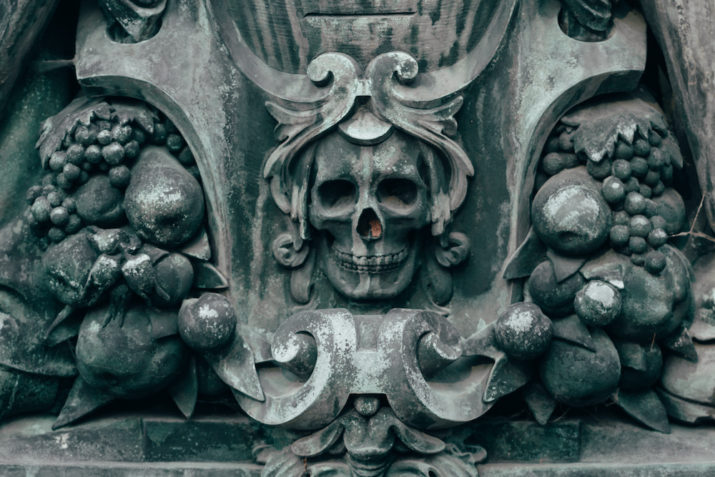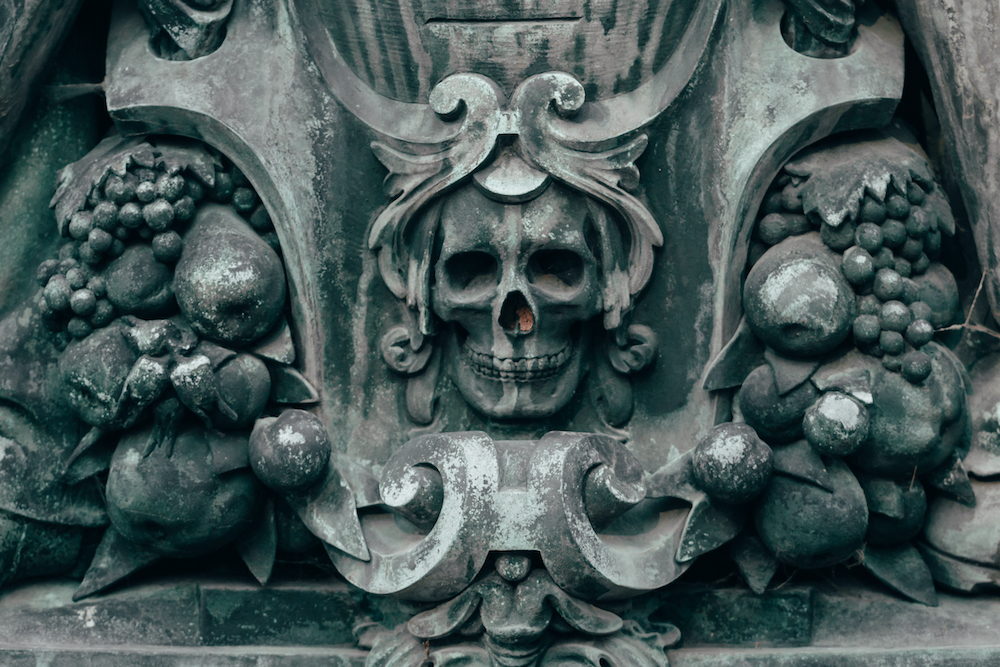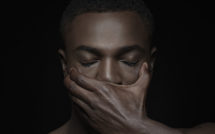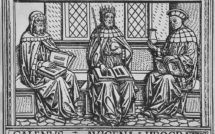
Plagues in Our Households: Teaching Medieval and Modern Pandemics through Family History

This is part of our Campus roundtable on Teaching Medieval in Modern Plague Times.
As a history instructor and researcher of medieval plague outbreaks, facing a modern pandemic with students has been both challenging and rewarding. When my class first discussed coronavirus arriving in North Texas, there was certainly palpable tension in the room. Our Junior Research and Writing Seminar, Bound by Blood: The Medieval Family, had been meeting weekly since mid-January, and students had already chosen their final research topics. Every Wednesday, we discussed themes related to the medieval family, from the biblical antecedents of marriage law to the slow-moving Christianization of the European household. By the end of February, we looked at the emergence of primogeniture, the practice of bestowing on an eldest son one’s entire inheritance. As course instructor, I had the uniquely challenging, yet exciting, task of navigating students through the intricacies of late medieval inheritance practices. I brought them closer to understanding the social and legal determination of family roles, and that our freedoms in life, to choose a career or significant other, should not be taken for granted. Instead, I was forced to complete a different objective all together. I needed to inspire student enthusiasm for plague history while still reminding them to keep context in mind, all days before our university’s shutdown.
It can be notoriously challenging to pique a passionate interest in students for unfamiliar events. The medieval history instructor is charged with making centuries-old events pop with vibrancy and immediacy for her students. As a historian who teaches introductory survey courses on the medieval world, I face this challenge quite frequently. For instance, upon first mentioning the Investiture Conflict and the Fourth Lateran Council, I can expect to draw blank stares. My job is to foster a realization in students that church doctrinal disputes could have lasting real-world impact. Councils started wars and spurred on the exclusion of Jews and Muslims in towns across Europe. Nonetheless, it can be difficult for students to understand these effects without carefully reconstructing a medieval context through combining different kinds of materials: narrative lectures, visual resources, and engaging primary sources.
However, with a new pandemic nearing campus, we would have to leave behind our typical ways of identifying historical contexts. When the announcement came in early March that classes would not be resuming in person after Spring Break, I faced a dozen worried undergraduates. Instantly, I put students in the driver’s seat, asking them to decide as a class what we should accomplish during our last on-campus meeting. As it turned out, a majority of students wished to compare the COVID-19 outbreak with the Black Death, while discussing both pandemics’ impact on families. This would not be an easy operation to undertake. Our syllabus did include a week on household changes that occurred after 1348, when the yersinia pestis, the bacteria that causes the disease referred to as plague, first appeared in fourteenth-century mainland Europe. However, a comparison of two wildly different historical contexts was not on the class agenda.
Instead of preparing for a freewheeling discussion on how plague might have changed family roles, I found myself tempted to distill a month’s worth of introductory plague context into an hour-long presentation to the class. This, of course, would have been a mistake. I decided instead to have students consider more localized family units. I assigned an in-class short reading, so that as a class we could collectively try and piece together the new social and cultural environment suddenly brought on by the plague. The readings we looked at included the famous prologue to The Decameron and manor court rolls from rural England that pertained to the abandonment of property during the first wave of pandemic in the late 1340s. These two sources represented two distinct genres, one literary and the other administrative, and they provided students with a fuller geographic and social picture of what the plague may have felt like as it arrived in towns. Excited by the sudden historical relevance of our discussion, the students rapidly brought together different contextual fragments. They determined that just as COVID-19 jumped from family to family in Wuhan Province, yersinia pestis also spread through households. This comparison revealed connections to the past with undeniable emotional impact, as we discussed how sheltering in place might have affected families both then and now. The students were excited to draw parallels between our contemporary context and medieval ones. At the same time, it grew apparent that my job would become more complicated, as I had to steer them towards historical thinking, as well as the understanding that contexts existing centuries apart were never exactly the same.
An event like the Black Death immediately both horrifies and intrigues students, who, until this year, were not used to living through a pandemic. Teaching events that seem familiar to students carries with it a certain appeal. However, inevitably students become frustrated by how much historians don’t know about the pandemic as an event: how many lives were lost by region, whether certain sectors of the population were affected more than others, what medieval doctors really knew in regard to how contagious diseases spread. This problem originates with the documents themselves (or a lack of them). Sources surviving from the 1340s, and even from the 1350s, are notoriously difficult to come by: trawling through archives yields few records for these years, and it is common to encounter massive lacunae in the notarial record. Despite these troubling unknowns, my class last spring delved into discussing the Black Death with enthusiasm. Teaching the subject felt novel and challenging, mostly because the medieval context and our own present one had finally seemed to align. During that last in-person class in early March, we read commonly-cited plague sources with new eyes. For instance, a first-hand account of the plague by the Sienese artisan and chronicler Agnolo di Tura described the abandonment experienced by so many plague survivors, and one that the class feared might be waiting for us within a matter of weeks. Agnolo wrote, “The infected die almost immediately. They swell beneath the armpits and in the groin, and fall over while talking. Fathers abandon their sons, wives their husbands, and one brother the other. In the end, everyone escapes and abandons anyone who might be infected… In these ways, they die and no one can be found who would want to bury them, not even for money or in the name of friendship…” His descriptions of the breakdown of the family unit echo today, months into our own pandemic, as small family units shelter-in-place. Most of us have had to deny the support and comfort of an extended network of relations and friends in exchange for the greater physical security provided by social isolation.
While comparing medieval and modern plagues in the classroom, there are ways to prevent the inevitable elision of historical nuance. Pointing out the differences between multiple contexts can count as an enriching exercise for students, hopefully helping them to reconstruct the historical backdrop behind any given event. Identifying differences between contexts will assist students in discussing cause and effect and the overall impact of environmental crises on social change. These are the questions that historians ask themselves constantly in their own writing and research and gets at the heart of what it means to study history. One way to avoid generalizing about two events almost 700 years apart would be to start with identifying the basic factual information for an event related to each plague. For instance, the class could compare how news about the plague’s arrival traveled. An instructor can put two years on the board, 1348 and 2020, then continue asking the class to recall details from the readings related to 1348 (I recommend Rosemary Horrox’s Black Death: A Reader as a sourcebook). Students can then generate responses for 2020 based on their own recent memories or read a few assigned newspaper articles related to Covid-19 beforehand. Rather than leaving the lists on the board, foregoing any critical examination, students should then be asked to compare the two sets of data points. In relation to news transmission, class, geographic location, and gender could be fascinating intersections for collective analysis. This activity could be done in small groups or together as an entire class. Asking the class to generate three ways in which the context for each example of news differs might introduce nuance into the discussion. Expected answers would most likely revolve around technology and the internet, as well as scientific literacy among the general population. The objective of this assignment is to introduce the students to the challenges inherent in comparing historical contexts.
We are living throughout our own historical moment, one that will no doubt be the catalyst for political, social, and economic changes on the local and global scale. As instructors of history, we should use this time to convey important lessons to our students, especially in regard to context, contingency, and the relationship between cause and effect, all analytic queries at the core of the historical discipline. Teaching during this crisis might help foster a sense of empathy, with not only people suffering from the social and economic fallout from Covid-19, but also for people of the mid-fourteenth century. With our help, students might how the late-medieval plague outbreak was distinct from our own, and even attempt to answer that question. Doing so should open up wide-ranging discussions on how to think about echoes from the past, and the connections and ruptures between the pre-modern world and today.
Bianca Lopez is the W. R. Nicholson Assistant Professor of Medieval and Renaissance Studies at Southern Methodist University. She teaches courses on European medieval history, the pre-modern family, and the Black Death.
Photo: Medieval ornament with symbols of death and skull on a tombstone in a cemetery | Shutterstock
Published on December 8, 2020.




